The Bengal Famine of 1770 occurred during the reign of the British East India Company, which had established a significant presence in India. In India’s history, certain events echo as harrowing reminders of human suffering and the unforgiving forces of nature. The Great Bengal Famine of 1770 stands as one such catastrophic event, hence leaving an indelible mark on the pages of India’s colonial past. In this blog, we will learn more about the Bengal Famine of 1770, its history, background, cause, end and its impact on Indians.
Also Read: Arrival of the East India Company and its Expansion
Background and History of the Bengal Famine of 1770
After the Battle of Plassey and Buxar, in Bengal, dual rule existed when the East India Company was given permission to collect revenue through the Diwani Rights but had not yet taken control of civil administration. This was during the reign of the Mughal governor, the Nawab of Bengal Nazm ud Daula, from 1765-72. The Nawab was merely a titular ruler and the real power was in the hands of the British.
Additionally, the lack of rain led to crop failures causing widespread hunger in Bengal. The Company had recently acquired control of Bengal, and they did not prepare to deal with the oncoming famine. The East India Company continued collecting revenue and taxes from people through their policy even though they knew many people were starving. The drought began in 1769 and the lives that were lost were around 10 million.
What Caused the Great Bengal Famine of 1770?
The reasons behind the famine of 1770 are complex and disputed. However, the following factors seemed to have caused the Bengal Famine of 1770:
- The East India Company forced the farmers to grow cash crops like indigo and poppy instead of food grains. Thus, there was already a shortage of grains.
- A severe drought led to crop failures throughout Bengal.
- The Policies introduced by the British East India Company included the collection of high taxes and the export of food grains from Bengal.
- Even though millions were dying of starvation, the British East India Company increased the tax rate for farmers as the Company had lost a lot of revenue from the agricultural sector due to the drought.
- Moreover, the decline of the traditional system of food distribution.
- The spread of disease.
Also Read – Bengal Partition: A Tale of Division between Hearts and Lands
What was the Impact of the Bengal Famine of 1770?
The estimation is that up to 10 million people died, or about one-third of the population of Bengal. Moreover, the Bengal Famine of 1770 had a combination of factors, including a drought, crop failures, and the policies of the British East India Company.
- Social Impact: The famine had a devastating impact on the social fabric of Bengal. Many people were forced to abandon their homes and villages in search of food. Additionally, there was widespread disease and death. Reports from the time describe horrifying scenes of people resorting to eating leaves, roots, and even human flesh to survive.
- Political Impact: The famine had a lasting impact on the political fabric of Bengal. It led to the decline of the Mughal Empire. The famine also led to a loss of trust in the British East India Company and also helped to pave the way for the Indian Rebellion or Revolt of 1857.
What were the Results of the Bengal Famine of 1770?
The results of the Bengal Famine of 1770 are as follows:
- The British East India Company’s profits regardless saw an increase as they were still exploiting the farmers for revenue during the drought.
- Even though there was an increase in the Company’s profits, their finances were draining which further led to the Tea Act of 1773.
- Furthermore, the land of the farmers became jungles for years.
- Bengal also witnessed an increase in the number of thugs and dacoits.
How Did the Bengal Famine of 1770 End?
The famine ended due to rainfall in 1770. That led to some of the lessons that can be learned from the Bengal famine:
- The importance of early warning systems.
- Moreover, a requirement to invest in agricultural development.
- The importance of social safety nets.
- A need to address the root causes of poverty and hunger.
Also Read- Partition of India and Pakistan (1947)
In conclusion, the Bengal Famine of 1770 is a testament to the consequences of economic exploitation, environmental neglect, and the patience of the human spirit. It calls upon us to remember the past and strive for a world where compassion, responsible governance, and environmental protection take precedence over profit and exploitation.
Relevant Blogs
| Warren Hastings | Tribes of India |
| Zamindari System | Santhall Rebellion |
| Humayun | Shah Jahan |
| Battle of Panipat | 50 Interesting History Facts |
| Alauddin Khilji | History of Indian Art |
There are numerous factors responsible for the Bengal Famine of 1770, such as the harsh Tax and Revenue Policy of the British East India Company and the severe drought that damaged all the crops.
The Governor of Bengal during the Bengal Famine of 1770 was John Cartier.
The most affected by the famine of Bengal were all the people of Bengal which includes one-third of the population of Bengal that were killed. Moreover, the farmers were also subject to the cruel policies of the Company which were the tax that increased during the drought.
We hope you liked what you read. If you want to read more articles like this you can visit our general knowledge page on Indian History!
 One app for all your study abroad needs
One app for all your study abroad needs













